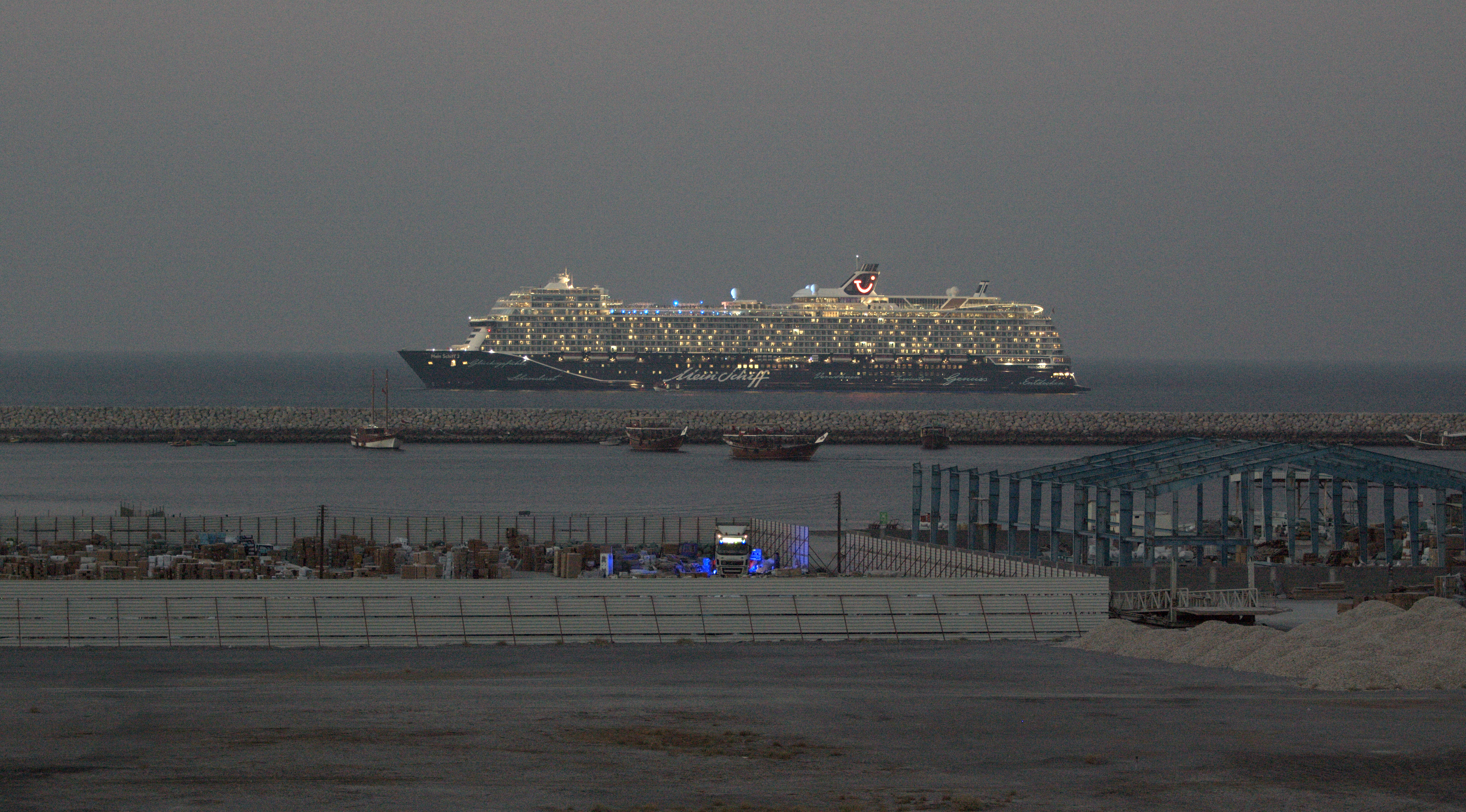The inauguration event was held in St. Petersburg on September 27, 2000. Following the agreement’s ratification, it came into force in 2002. See Evgeny Y. Vinokurov, Arman Ahunbaev, and Alexander I. Zaboev, “International North–South Transport Corridor: Boosting Russia’s ‘pivot to the South’ and Trans-Eurasian Connectivity,” Russian Journal of Economics (Moskva) 8, no. 2 (2022): 159–73, 160.
The fourteen member states are India, Iran, Russia, Turkey, Azerbaijan, Kazakhstan, Armenia, Belarus, Tajikistan, Kyrgyzstan, Oman, Ukraine, and Syria; Bulgaria as an observer state.
The Ashgabat Agreement is a multimodal transport agreement among the governments of Kazakhstan, Iran, Turkmenistan, Uzbekistan, Pakistan, Oman, and India.
I initially came across this information while doing participant observation during preliminary fieldwork in Khasab in December 2021. It was later corroborated in a semi-structured interview with an Iranian merchant responsible for the livestock trade’s logistical organization.
As of 2023, the Astara-Rasht railroad, Sadakhlo-Yerevan highway, and semi-completed Chabahar port are the main missing links.
As an internationally-ratified treaty, this document delimits each sovereign state’s territorial waters and paves the way for the spirit of collaboration necessary for infrastructural development. See “Convention on the Legal Status of the Caspian Sea,” Office of the President of Russia.
Russia’s Federal Security Service (which has long been subcontracted by Armenia to patrol its borders with Iran) was designated as the guarantor overseeing the transition toward an era of higher mobility in these borderlands. See “Statement by President of the Republic of Azerbaijan, Prime Minister of the Republic of Armenia, and President of the Russian Federation,” November 10, 2030, ➝.
The high priority given to INSTC in Russian-Iranian relations is clear in the utilization of Anzali-Astarkhan ports to transport military cargo (primarily low-cost battle drones and ammunitions) destined for use against Ukrainian civil infrastructures in early 2023. The announcement of a $1.3B Russian interstate loan to Iran for the construction of the Rasht-Astara railway is another example. See Nicola P. Contessi, “The Great Railway Game,” Reconnecting Asia, October 15, 2021, ➝.
Iranian officials describe their efforts to dodge U.S. sanctions as a “resistance economy.” The exact architecture, scale, and details of Iran’s sanction-evading finance system are largely unknown. See “Iran's Return to FATF Blacklist Restricts its Exports,” TCA Regional News, October 27, 2020.
He initially made this claim in a live debate on social media in January 2021. See Ian Talley, “Clandestine Finance System Helped Iran Withstand Sanctions Crush, Documents Show,” The Wall Street Journal, March 18, 2022, ➝.
In his investigative work, Wall Street Journal investigator Ian Talley concludes that at the center of Iran’s sanctions circumvention program is a series of proxy organizations that help Iranian banks plug into the global financial system using middle-man entities overseas. For more on the innerworkings of Iran’s sanction circumvention, see Talley, “Clandestine Finance System Helped Iran Withstand Sanctions Crush.”
See Ananya Roy, “Slumdog Cities: Rethinking Subaltern Urbanism,” International Journal of Urban and Regional Research 35, no. 2 (2011): 233; also see Colin McFarlane and Michael Waibel, “Introduction: the Informal-Formal Divide in Context,” Urban Informalities: Reflections on the Formal and Informal; and Asef Bayat, “Un-Civil Society: The Politics of the ‘Informal People,’” Third World Quarterly 18, no. 1 (1997): 60.
Mahmoud Keshavarz and Shahram Khosravi, eds. Seeing Like a Smuggler: Borders from Below (Pluto Press, 2022), 2.
I borrow this concept from Oren Yiftachel who uses it to describe the spaces “between the ‘lightness’ of legality/approval/safety, and the ‘darkness’ of eviction/destruction/death.” See Oren Yiftachel, “Critical Theory and ‘Gray Space’: Mobilization of the Colonized,” City 13, nos. 2-3 (2009): 246–63, 251.
For a complete discussion on the role of SEZs as alternative gateways to the international economy see Hassan Hakimian, “Iran’s Free Trade Zones: Back Doors to the International Economy?” Iranian Studies 44, no. 6 (2011): 851–74.
Simone argues that the networked actions and sensibilities of citizens can form alternative infrastructural systems in response to chains of precarity. In other words, people are not passive recipients of infrastructure but actively shape it through their social and cultural practices, identity-based performances, and illicit or differentially-sanctioned interactions with the built environment. See AbdouMaliq Simone. “People as Infrastructure: Intersecting Fragments in Johannesburg,” Public Culture 16, no. 3 (2004): 407.
Jesse C. Ribot and Nancy Lee Peluso, “A Theory of Access,” Rural Sociology 68, no. 2 (2003): 164.
Keshavarz and Khosravi, Seeing Like a Smuggler, 12.
Hernando de Soto, The Mystery of Capital: Why Capitalism Triumphs in the West and Fails Everywhere Else (New York: Basic Books, 2000), 41
Field notes from a conversation on January 27, 2024.
Field notes from conversations between January 19 and February 28, 2024.
Field notes from conversations between January 19 and February 28, 2024.
Field notes from a conversation on January 28, 2024.
Perhaps the most iconic indicator of these shifts can be seen in the construction of a massive penitentiary and police training complex concurrent with the operationalization of the port between 2013-2016.
Field notes from a conversation on February 15, 2024.
Field notes from a conversation on February 15, 2024.
